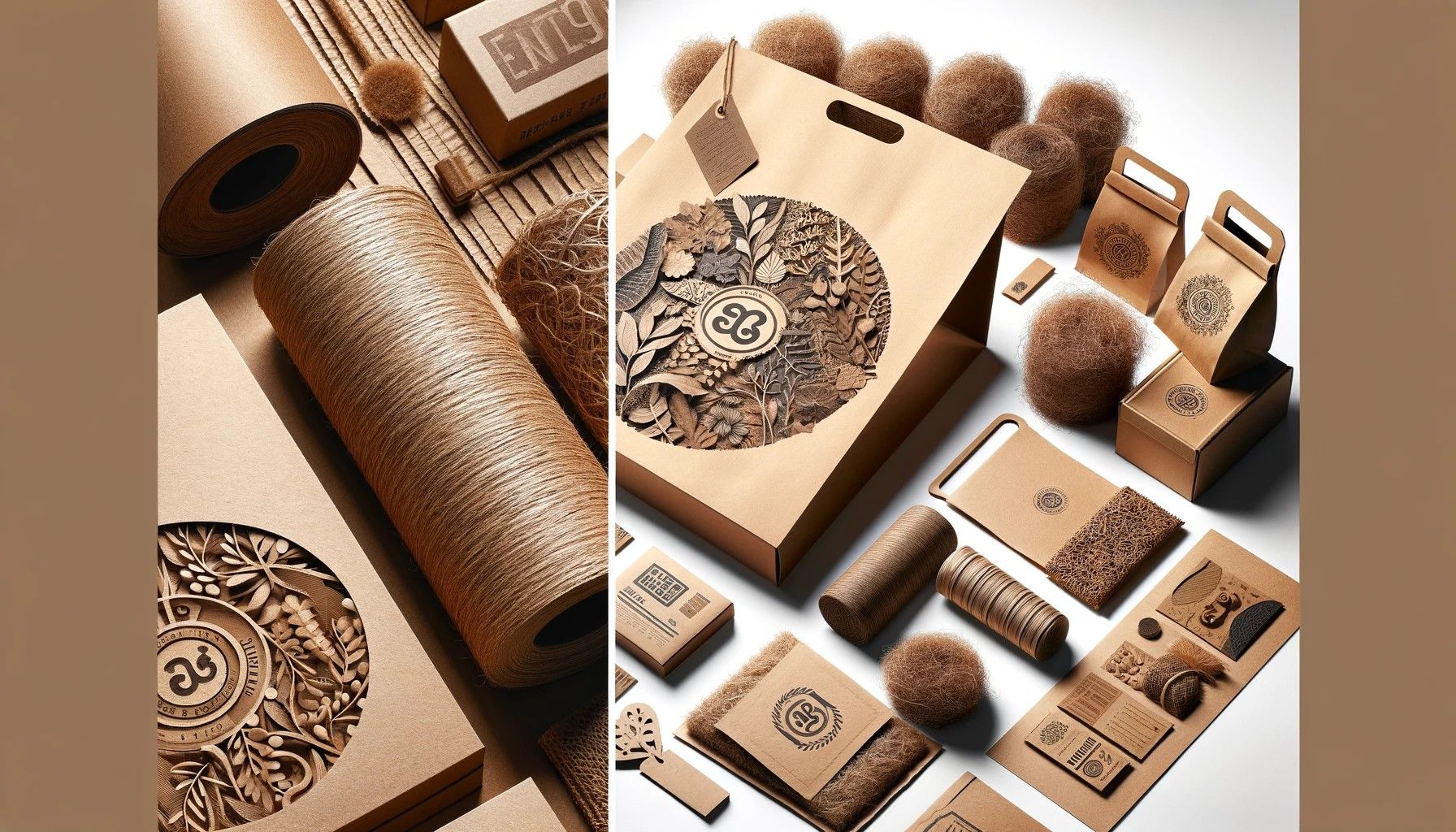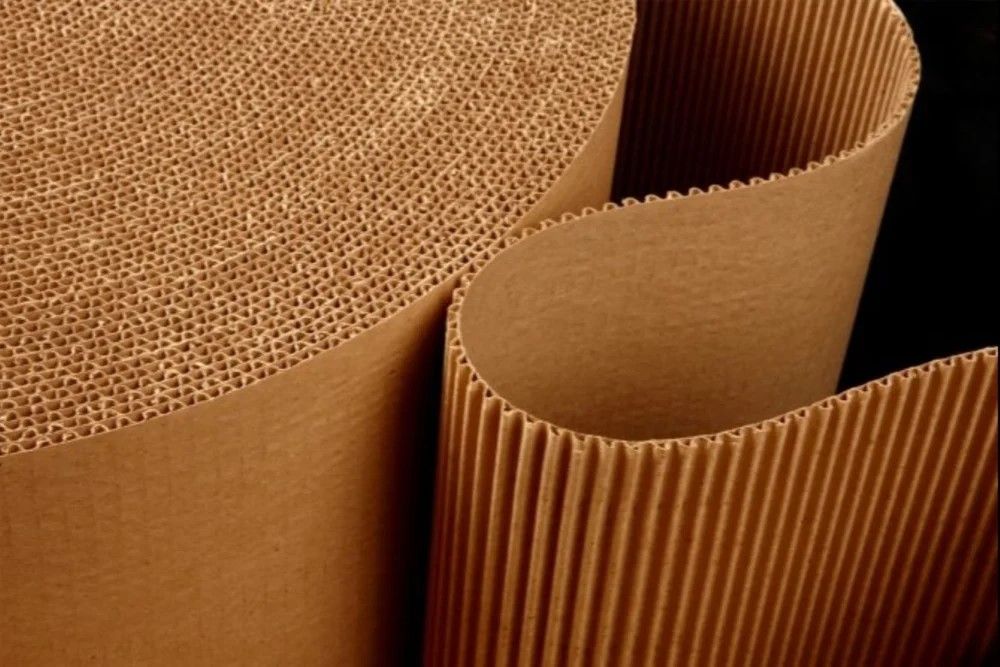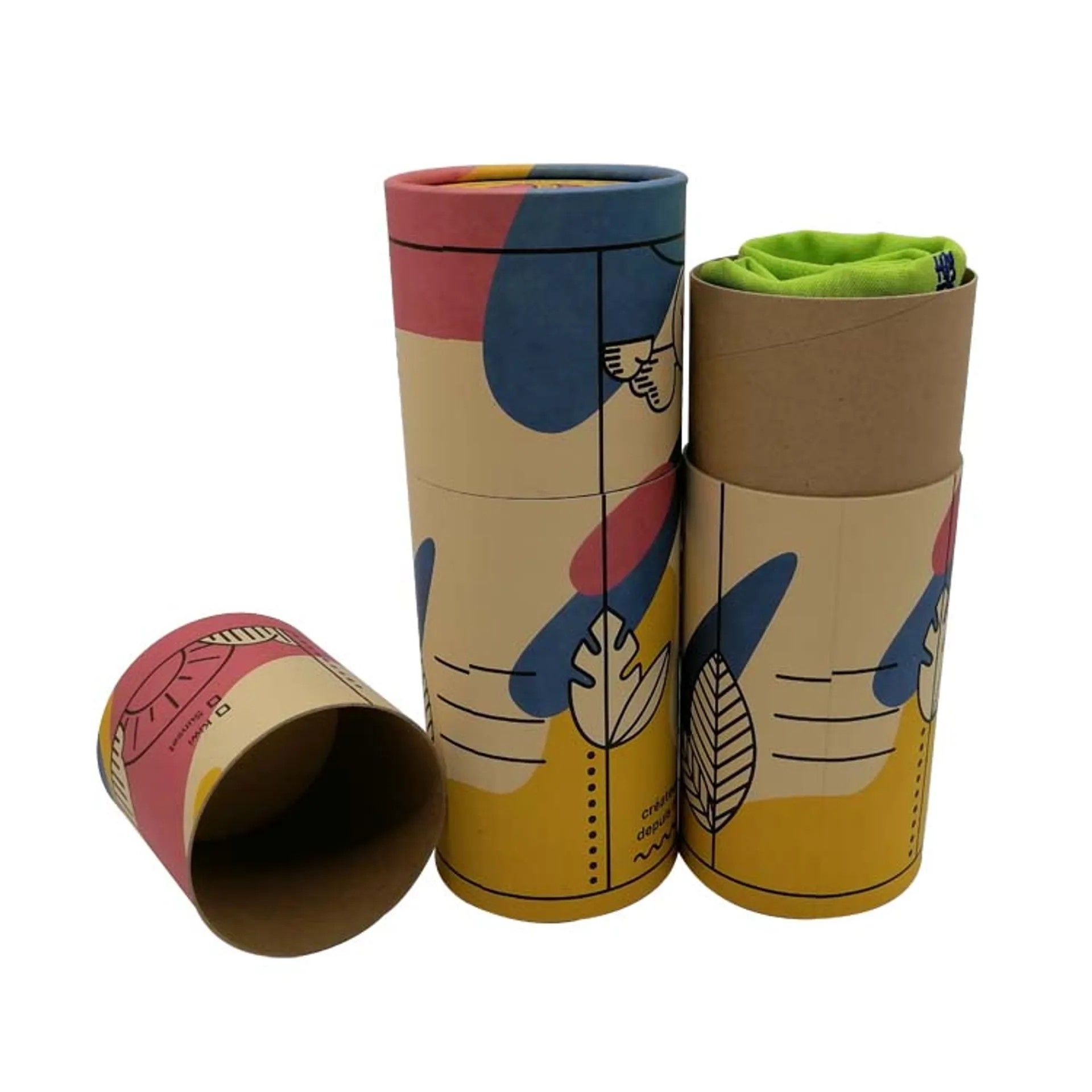
Get A Quote
What is Kraft Paper and Why is it a Popular Packaging Choice?
The term 'kraft paper' might evoke various images, from childhood memories of sandwich wrappings to a crumpled piece in your latest online order, or even as a staple in craft projects. Surprisingly, this humble material is also the backbone of traditional corrugated cardboard boxes.
Kraft paper isn't just confined to being part of cardboard; it's also used independently as a flat, thin sheet. This versatility leads to its numerous applications and a plethora of names like brown paper, butcher paper, and recycled wrapping paper.
This article delves into the multifaceted world of kraft paper, revealing its benefits for businesses in terms of security, branding, environmental impact, and cost-effectiveness.
What is Kraft Paper?
Kraft, derived from the German word for 'strong', aptly describes kraft paper's characteristics.
Raw kraft is celebrated for its durability, resistance to tearing, and its distinct brown hue, a result of the kraft pulp process. Beyond these features, kraft paper board is surprisingly versatile, available in various colors and shades, making it a favored choice for branded packaging solutions.
Kraft paper's eco-friendly nature adds to its appeal. It's biodegradable, widely used across industrial and commercial sectors for packaging and safeguarding products.
The Creation of Kraft Paper
The story of kraft paper begins in the late 19th century with engineer Carl F. Dahl, whose mission in a paper mill was to produce the finest paper products. Facing the challenge of certain papers not meeting strength requirements, Dahl innovated the manufacturing process.
The journey of kraft paper starts with woodchips arriving at the mill. These chips are crushed and mixed with an adhesive. Dahl's pivotal discovery was that treating one of the woodchip components with sulfates significantly enhanced the material's strength, leading to the birth of kraft paper.
This newfound material quickly became indispensable in the packaging and food industries. Its cost-effectiveness and durability, especially after wax coating, made it ideal for packaging meats, thus earning the moniker 'butcher paper'. This innovation marked a significant advancement in material science, particularly for packaging applications.
Kraft Paper Compared to Regular Paper
The distinction between kraft and regular paper lies primarily in their strength. Kraft paper's superiority in durability and tear resistance can be attributed to its unique production process. The kraft method effectively removes more lignin from the wood pulp, leaving a higher cellulose content. This cellulose is key to kraft paper's robust properties.

Additionally, raw kraft paper is more porous compared to regular paper. While this might slightly reduce its efficiency for standard printing, it opens up possibilities for specialized finishing techniques, such as:
- Embossing/Debossing: Creating raised or recessed designs on the paper surface.
- Foil Stamping: Applying metallic or pigmented foil for a decorative effect.
These characteristics of kraft paper make it not just 'special' but highly versatile and adaptable for various creative and practical applications, particularly in packaging.
Varieties of Brown Paper and Their Uses
Brown paper, a staple in packaging, comes in several types, each with unique characteristics and applications.
1.Coated Unbleached Kraft Paper: This is the most common brown paper. It retains its natural color, providing a rustic look. Notable for its tear resistance, it's also sturdy yet lightweight.
2.Coated Kraft Paper: Often brown paper treated with a white additive, creating a more neutral, 'blank canvas' look. While maintaining some natural texture, its white appearance makes it ideal for custom printing.
3.Colored Kraft Paper: Kraft paper can also be dyed into various colors for unique branding purposes.
Regarding the types of material used in these papers:
- Virgin Kraft Paper: Made directly from raw wood pulp, this is the strongest type of brown paper, used in applications where durability is key, like corrugated mailer boxes and kraft packaging tape.
- Recycled Kraft: Created from recycled materials like cardboard boxes and books, this type of kraft paper is a sustainable option for environmentally conscious brands. It's commonly used for product boxes, paper bags, and paper cans.
- Mixed Kraft: A combination of virgin and recycled pulp, mixed kraft paper balances strength, cost-effectiveness, and ethical considerations. It's typically used in cardboard envelopes and other postal packaging.
Advantages of Using Kraft Paper
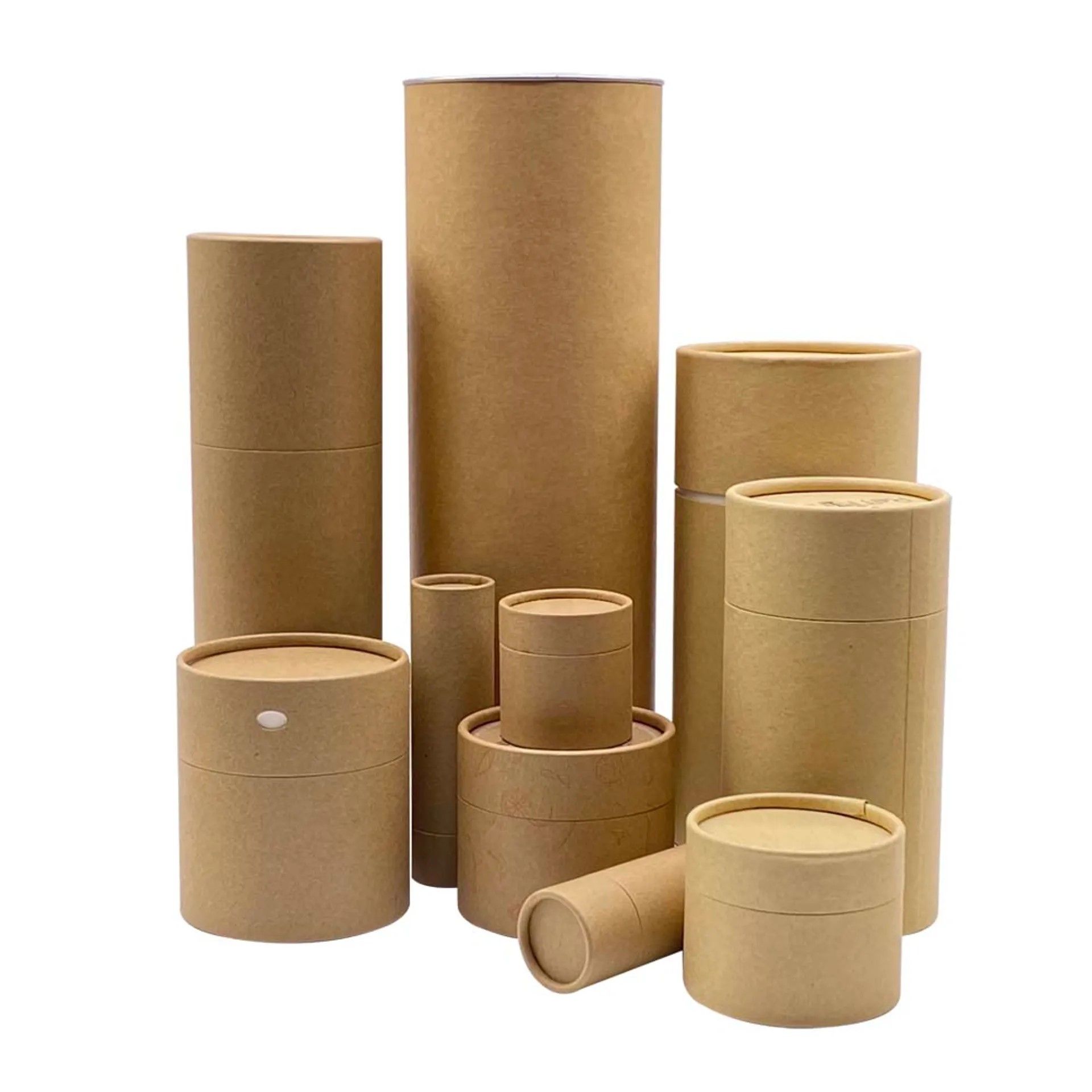
Kraft paper's popularity in the packaging world stems from its numerous benefits, making it a versatile and environmentally friendly choice.
1.Exceptional Strength: The primary advantage of kraft paper is its strength, attributed to its high sulfur content and low lignin. This makes it more durable and resistant to tearing and piercing compared to other papers.
2.Versatility in Raw Materials: Kraft paper can be made from various wood types, including pine, bamboo, and oak. This versatility in sourcing allows for easy production and availability, resulting in lower material costs.
3.Utilization of Imperfect Trees: Many kraft papers are produced from trees not suitable for other uses, making it a resource-efficient option.
4.Natural Appearance Without Bleaching: Retaining its natural color and texture, kraft paper doesn't require bleaching. This reduces processing steps, saves costs, and is more environmentally friendly.
5.Wax Coating for Moisture Protection: Traditionally, waxed kraft paper was used for wrapping meats, as its water-resistant properties made it ideal for this purpose, earning it the name 'butcher paper'.
6.Ideal for Food Packaging: Both coated and uncoated kraft paper are excellent for food packaging, like tortilla wraps and holders, due to their safe and durable nature.
7.Sustainable Production Process: The chemicals used in kraft paper production are recoverable and reusable, promoting a circular economy. Furthermore, byproducts like tall oil are repurposed in other industries, such as asphalt and fire-starting bricks.
Tailoring Kraft Paper to Your Brand
The customization possibilities for kraft paper are extensive, offering a unique opportunity to make your packaging stand out while reinforcing your brand identity.
1.Branding and Design: Many printing services provide custom printing on kraft paper, allowing you to incorporate your brand's logo, slogan, or specific artwork. This personalization can transform your packaging into an effective marketing tool.
2.Finishes: You have the option to select from various finishes like matte or gloss. These finishes can significantly alter the look and feel of your packaging, giving it a distinctive appearance.
3.Colors and Patterns: Experimenting with different colors and patterns can help you create a design that truly represents your brand's ethos and personality. Whether it's bold and vibrant or subtle and sophisticated, the choice is yours.
4.Creating an Experience: Customized kraft paper packaging can enhance the unboxing experience, leaving a lasting impression on your customers. This memorable encounter can be pivotal in boosting brand recognition and fostering customer loyalty.
Incorporating these customization options into your kraft paper packaging not only adds a personal touch but also aligns the packaging with your brand's overall image and messaging strategy.
Environmental Advantages of Using Brown Kraft Paper
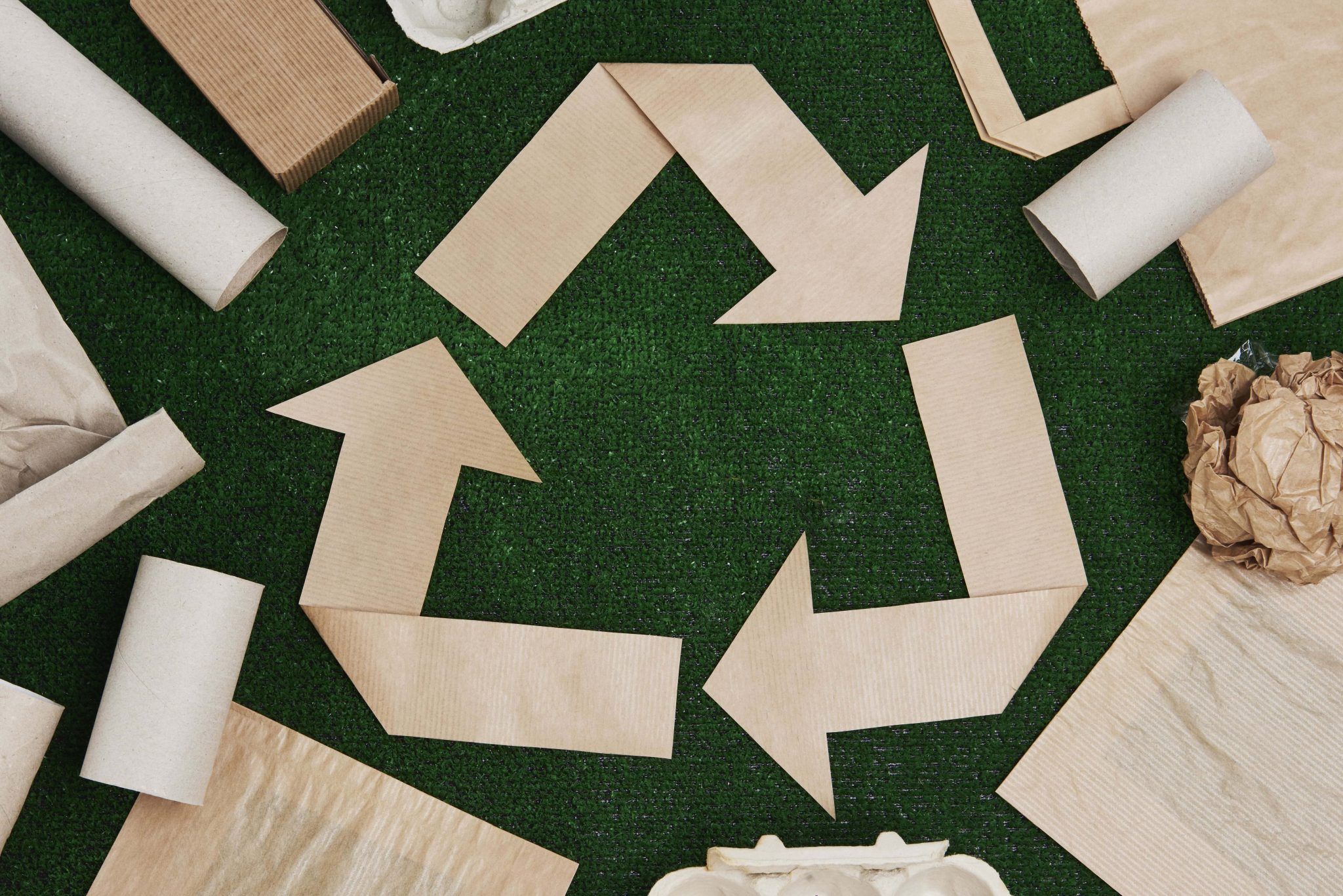
Kraft paper stands out not just for its strength and versatility, but also for its eco-friendliness.
1.FSC Certification: Virgin pulps used in kraft paper, often come with FSC certification. This ensures the materials are sourced in a sustainable, ethical, and renewable manner.
2.Biodegradability: Uncoated kraft paper and corrugated cardboard naturally decompose without leaving harmful residues. If discarded in a garden, these materials will compost, returning to the earth without releasing toxins, especially if the ink used is eco-friendly.
3.Efficiency in Production and Recycling: The widespread use of kraft and cardboard makes their production and recycling processes incredibly efficient. This efficiency extends to the economics of scale, making it less labor-intensive and more energy-efficient compared to small-scale production.
4.Minimizing Carbon Footprint: For brands aiming to reduce their environmental impact, brown paper and cardboard are excellent choices. Their production is energy-efficient, and the end products are both recycled and recyclable.
Concluding Thoughts
Kraft paper is a common element in our daily lives, known for its dual role as a protective material and a canvas for branding in packaging. Its environmental benefits add to its appeal, making it a responsible choice for businesses and consumers alike.
Want to customize your tube or box packaging solution? Leave your needs below and our experts will contact you soon!

